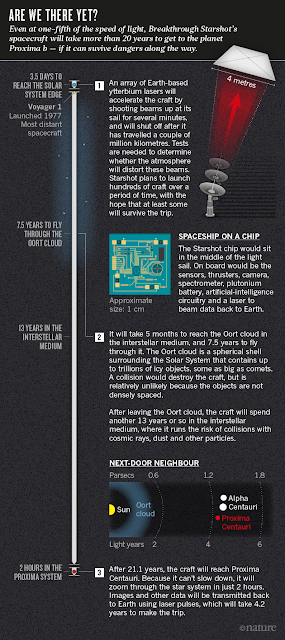
Breaking News
 Silver Stage Set for Delivery Meltdown: Keith Neumeyer Dissects COMEX, LBMA CRISIS!
Silver Stage Set for Delivery Meltdown: Keith Neumeyer Dissects COMEX, LBMA CRISIS!
 No one noticed this about Mamdani's speech
No one noticed this about Mamdani's speech
 Job Cuts Explode – Up 65 Percent Compared To Last Year – The Employment Market Has Become...
Job Cuts Explode – Up 65 Percent Compared To Last Year – The Employment Market Has Become...
Top Tech News
 HUGE 32kWh LiFePO4 DIY Battery w/ 628Ah Cells! 90 Minute Build
HUGE 32kWh LiFePO4 DIY Battery w/ 628Ah Cells! 90 Minute Build
 What Has Bitcoin Become 17 Years After Satoshi Nakamoto Published The Whitepaper?
What Has Bitcoin Become 17 Years After Satoshi Nakamoto Published The Whitepaper?
 Japan just injected artificial blood into a human. No blood type needed. No refrigeration.
Japan just injected artificial blood into a human. No blood type needed. No refrigeration.
 The 6 Best LLM Tools To Run Models Locally
The 6 Best LLM Tools To Run Models Locally
 Testing My First Sodium-Ion Solar Battery
Testing My First Sodium-Ion Solar Battery
 A man once paralyzed from the waist down now stands on his own, not with machines or wires,...
A man once paralyzed from the waist down now stands on his own, not with machines or wires,...
 Review: Thumb-sized thermal camera turns your phone into a smart tool
Review: Thumb-sized thermal camera turns your phone into a smart tool
 Army To Bring Nuclear Microreactors To Its Bases By 2028
Army To Bring Nuclear Microreactors To Its Bases By 2028
 Nissan Says It's On Track For Solid-State Batteries That Double EV Range By 2028
Nissan Says It's On Track For Solid-State Batteries That Double EV Range By 2028
$100 million Breakthrough Starshot small interstellar probe project will start...

The Breakthrough Starshot is an effort backed by US$100 million from Russian investor Yuri Milner to vastly accelerate research and development of an interstellar space probe.
Leaders of the mission plan to start funding technology-development projects within months, with the aim of launching a fleet of tiny, laser-propelled probes in the next 20 years. The effort would ultimately cost about $10 billion, leaders hope, and take another 20 years to reach Alpha Centauri.
The first truly challenging step in any mission such as Breakthrough Starshot is to accelerate the spacecraft to interstellar velocities.
Researchers at the Japan Aerospace Exploration Agency (JAXA) and the Planetary Society have deployed solar sails in space. An advanced solar sail could theoretically reach about 13% of the speed of light if it could withstand high temperatures and was ultrathin and performed a gravitational slingshot move around the sun that passed within a couple of solar radii. The materials for such a sail do not yet exist (at least in sufficient quantities).
NOTE - a recent paper shows how a gravity slingshot could be used to decelerate an interstellar probe travelling at 4.6% of lightspeed into a parking orbit in a target solar system
A Laser propelled sail has not been demonstrated in space and is required for the required speeds of about 25% of light speed.
The Starshot team plans to use conventional rockets to send its probes into orbit. Then a 100-gigawatt laser array on Earth would fire continuously at the sail for several minutes, long enough to accelerate it to 60,000 kilometers per second
Starshot leaders acknowledge that they are counting on breakthroughs from the laser industry. One hundred gigawatts will be a million times more powerful than today's biggest continuous lasers, which put out hundreds of kilowatts. One way around that gap would be to combine light from hundreds of millions of less powerful laser beams across an array that is at least a kilometer wide. But the beams would all need to be brought into phase with each other so that their light waves add rather than cancel each other out — making the lasers one of the mission technologies that requires the most development work.
Whatever the design, the sail must be strong. A 100-gigawatt laser beam will hit it hard, generating tens of thousands of times the acceleration that an object feels on Earth owing to gravity. Artillery shells have survived such forces in military tests, Worden notes, but for less than a second — not the several minutes for which the laser will pound the device.
Starshot's plan would build strength in numbers. The spacecraft would be small and relatively low-cost, so the project could launch one or more every day, and even afford to lose some of them.
Development of the probes will proceed in stages, says Worden. The first step is to build a prototype system that would accelerate to perhaps 1,000 kilometers per second — less than 2% of the speed planned for Starshot — for a total cost between $500 million and $1 billion.
The craft
The Starshot craft will look like nothing ever launched into space. Imagine a small collection of electronics, sensors, thrusters, cameras and a battery on a roughly one-centimetre-wide chip in the centre of a circular or square sail, roughly 4 metres wide — all weighing just a gram. The lighter the craft, the faster a given force can accelerate it.
Here is a 68 page roadmap by Philip Lubin of the University of Santa Barbara for developing laser pushed sails.
Lubin's designs would enable wafersats to reach 25% of lightspeed and a 100 ton spaceship to reach 1000 kilometers per second.
Nextbigfuture notes that for manned missions going beyond 1000 km per second, the wafer chips could be accelerated at a manned ship with a pusher plate (like the Project Orion ship) but the energy would be kinetic and not nuclear.

 America's Hidden Royalty
America's Hidden Royalty Carbon based computers that run on iron
Carbon based computers that run on iron



